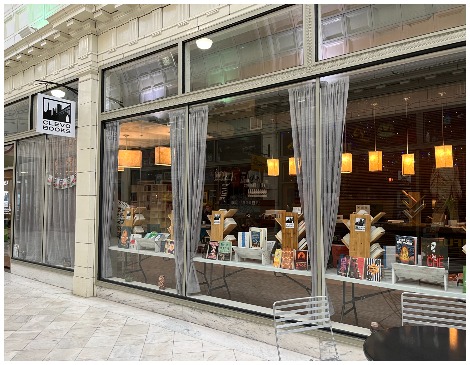Do you remember your child’s pictorial dictionary? The very first ones contain images of people, places or things that can be named: girl, father, doctor, astronaut, church, mountain, house, playground, ball, hat, Teddy bear, night light. Picture dictionaries for older children show people or animals engaged in more complex or abstract actions: teaching, helping, greeting, celebrating, shopping, playing, feeding, defending.
Dictionaries like these were helpful as my wife and I began to learn the indigenous language we would need to be effective cross-cultural missionaries. First, pictures of objects and the Indonesian vocabulary words that named them — family, son, clinic, fruit stand, pedicab, currency. And later, action scenes of Indonesian individuals and families, even animals indigenous to the islands like the Sumatran tiger, Komodo Dragon or Cockatoo, engaged in commonplace activities.

Robert Sellers
Yet, there is another way in which picture dictionaries have been used in everyday parlance to “define” persons, places or things. For example, someone might suggest that if you turn to “traffic jam” in a picture dictionary there will be a photo of 12 lanes of Jakarta traffic hopelessly snarled at a congested intersection. Or that you might look up “sanctuary” and find a picture of a cabin beside a lake in a mountain forest. Or, that you could understand “self-sacrifice” by the portrayal of Mother Teresa’s embracing a diseased beggar in a Calcutta gutter.
Like other dictionaries, those that rely upon pictures may helpfully offer related words to explore. Those seeking to understand “traffic jam” may be directed also to terms like “congestion,” “gridlock,” logjam,” bottleneck” or “rush-hour” where pictures of Jakarta’s traffic may also define those words. Similarly, people who search for “sanctuary” may be directed as well to “hideaway,” “refuge,” “haven,” “retreat” or “shelter” that might also be represented by the tranquil and inviting scene at the mountain lake house. Likewise, a search for “self-sacrifice” might lead one additionally to words like “benevolence,” “altruism,” “selflessness,” “generosity” or “kindness,” where Mother Teresa is the face of these associated personal qualities.
Of course, Jakarta traffic is not the only way pictorially to define “traffic jam,” nor is a mountain cabin the only — or even the most common — way to represent “sanctuary,” just as Mother Teresa is only one among many whose images might characterize “self-sacrifice.” These are, instead, very precise, personal choices that a picture dictionary’s editor might make to give visual meaning to these terms.
If you look up ‘evil’ in the dictionary …
So, allow me to argue that a precise definition of a familiar and over-used concept is a well-recognized current image. That is, if you look up “evil” in the pictorial dictionary, there you would find a photograph of Vladimir Putin.
- His military build-up of more than 150,000 troops, along with tanks, missile launchers, planes, bombs, armored troop carriers, medical teams and supplies on the borders surrounding Ukraine, a non-aggressive and independent country, was evil.
- His deceptive use of trumped-up and false flag charges against Ukraine in order to validate his ordering Russian forces to cross into a sovereign foreign nation to act as supposed “peacekeepers” was evil.
- His unilateral declaration of war against a neighboring country he perceived to be weaker and which he believed would submit to his aggression without a fight was evil.
- His condition for stopping the violence — that Ukraine not join NATO — was a demand he had no authority to make, yet was justified in his tyrant’s mind and was therefore evil.
- His sending ordinary Russian citizen soldiers as cannon fodder in a war they did not understand or support is evil.
- His arrest of Russian civilians who protested the war at home, accompanied by police intimidation and the use of clubs, rubber bullets and compression bombs, is evil.
- His establishment of safe corridors for civilian flight but then ordering troops to fire on fleeing families caught unprotected out on the open ground is evil.
- His attacks that have caused some 10 million refugees to flee are evil.
- His terrorization, indiscriminate murder and even direct targeting of children that has displaced 4.3 million, half of all the children in Ukraine, is evil.
- His barbaric behavior that ignored the hundreds of thousands of Ukrainians trapped in cities like Mariupol without electricity, food or water is evil.
- His indiscriminate destruction of whole cities, their infrastructure, historical buildings and treasured government, cultural and religious sites is evil.
- His genocidal attacks upon and destruction of universities, schools, kindergartens, hospitals, maternity wards, nurseries, apartment buildings, theaters, gymnasiums and other civilian places of refuge is evil.
- His refusal to be swayed by public opinion from his own country and around the world, or to be touched by pleas for the sanity to end to senseless and criminal conflict is evil.
Indeed, if you look up “evil” in the pictorial dictionary, that complex philosophical, psychological and sociological reality is defined by a picture of Putin.
But there are related words and synonyms that might be suggested by the pictorial dictionary to provide further examination of the concept of evil. A prompt to turn to the words “criminality,” “immorality,” “narcissism,” “insecurity,” “sociopathy,” “wickedness” and “diabolical actions” might lead the dictionary user, precisely and specifically, to additional pictures of Putin. He acts as an immoral criminal, whose narcissism hides his insecurity and an anti-social personality disorder that leads him to make wicked and even satanic choices.
Biden’s outrage
For these reasons, President Biden was moved to express his moral outrage, so that — standing in Warsaw, Poland, almost in plain sight of the gaunt and frightened victims of Putin’s inhumanity — he said: “For God’s sake, this man cannot remain in power!” Biden is acknowledged, by colleagues on both sides of the aisle who have known him for years in the U.S. Senate, to be a very empathetic man. He deeply felt the tragic consequences of Putin’s actions when he observed thousands of the most vulnerable refugee victims at the Polish border.

President Joe Biden delivers a speech at the Royal Castle on March 26, 2022, in Warsaw, Poland. (Photo by Omar Marques/Getty Images)
A code of ethics Biden has honed during more than 50 years of public service unfortunately misled him to express his private opinion, forgetting for the moment that he speaks publicly as the leader of the free world. Despite the ways critics, apologists and pundits will interpret the president’s remark, it is interesting that his perception of what is morally right and his personal desire to be a good person seem to stand in stark contrast to Putin’s evil.
If you look up ‘goodness’ in the dictionary …
Dictionaries frequently list antonyms that help to clarify a definition by contrasting the term in question with a diametrically opposed notion. It is this aspect of my exploration of a fictitious pictorial dictionary that intrigues me the most. For example, perhaps the entry for “evil” might suggest that its antonym is “goodness.” Sample sentences might be offered: After the coup, the military-controlled regime established an atmosphere of evil. Contrary to predictions by the opposing political party, the new administration demonstrated multiple evidences of goodness.
Numerous nouns that are related to the broad meanings of “goodness” come to mind. I think immediately of “compassion,” “humility,” “kindness,” “selflessness,” “care,” “morality” and “humane actions.” One’s moral compass leads him or her to act compassionately, kindly and selflessly, responding humbly toward others out of a sense of care and genuine humanity.
But here is the interesting question to which this exercise exploring fictitious pictorial dictionary entries guides me: Whose likeness will be used in the pictorial dictionary to define “goodness”?
If Vladimir Putin is the very image of evil, who will be the picture of goodness? Will the idea be defined by a collective such as the people of multiple faiths? Or will the word be portrayed by Christians of many theological persuasions, or by the universal church? Could the concept be represented by American evangelicals? Or by the members of my church? Or by the name of a person whose faith shapes her or his character?
Someone might suggest that if you want to understand “evil,” look up the word in the pictorial dictionary and there you will find Putin’s photo.
But could they also say, if you want to understand “goodness,” look up the word in the pictorial dictionary and there you will find my photo?
That question truly captivates and challenges me.
Rob Sellers is professor of theology and missions emeritus at Hardin-Simmons University’s Logsdon Seminary in Abilene, Texas. He is a past chair of the board of the Parliament of the World’s Religions in Chicago. He and his wife, Janie, served a quarter century as missionary teachers in Indonesia. They have two children and five grandchildren.
Related articles:
Let’s be clear: Putin’s invasion of Ukraine is not about the rapture and Russia in biblical prophecy | Analysis by Rodney Kennedy
How to pray for Vladimir Putin | Opinion by Bob Browning
Putin is no Antichrist; he’s worse than that | Analysis by Rodney Kennedy
As a pastor serves bread to the elderly in Ukraine, he prays to retain his humanity
Adblock test (Why?)






